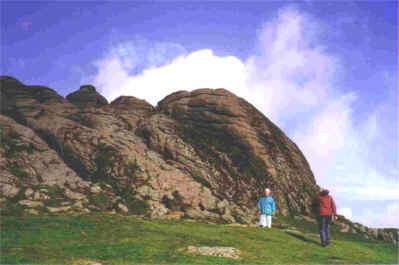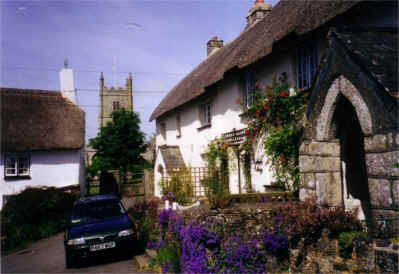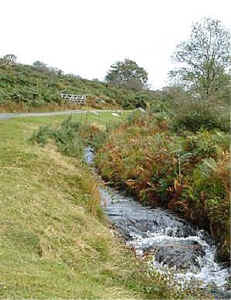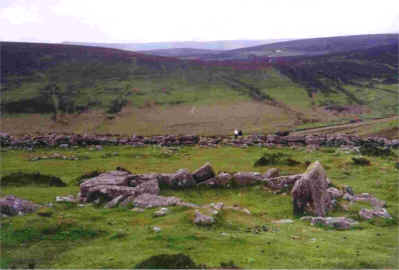|
|
Roy
Hayter writes:
A
few years ago, my wife and I did a week of walking on Dartmoor.
We stayed near Hay Tor Rocks, which has been a traditional place
for family photographs for as long as I can remember, seeing that my
paternal family name is Hayter, which means “high place.” Our family
oral history says that the Hayters came from near these rocks many eons
ago.
|
|

|
|
Hayters
at Hay Tor Rock
©Roy
Hayter |
|
During
this visit, we discovered that my mother’s Stentiford ancestors had
lived on the northern edge of Dartmoor, in the villages of South Tawton,
Drewsteignton, and South Zeal.
Now I could claim that both sides of the family had roots in
Devon.
|

|
|
South
Zeal
©Roy
Hayter |
|

|
|
Drewsteignton
©Roy
Hayter |
|

|
While
walking on Dartmoor, we saw several leats and were told of their
importance since ancient times, as a means of carrying water to tin mines and
gristmills.
They were similar to Drake’s Leat that was dug to supply
Plymouth with the first system of municipal water in Britain.
This was yet another achievement of my hero, although accompanied
by controversy, since his motives may have been personal gain rather
than the public good.
|
|
A Dartmoor Leat
|
|

|
|
Bronze
age village on Dartmoor
©Roy
Hayter |
|
In
addition to supporting tin mining on Dartmoor, the leats had the adverse
effect of sweeping waste matter from the tin mining process downstream
into Plymouth, silting up the estuary of the River Plym.
Protests
against the tin miners were of little avail.
As early as the 1200s, Sutton Pool came into use as an
alternative harbour that guaranteed access to food and fresh water for
passing vessels.
During Elizabethan times, Plymouth expanded rapidly, and
began to outgrow its original water supply from local natural resources
such as streams and wells. |
Click here to continue
|